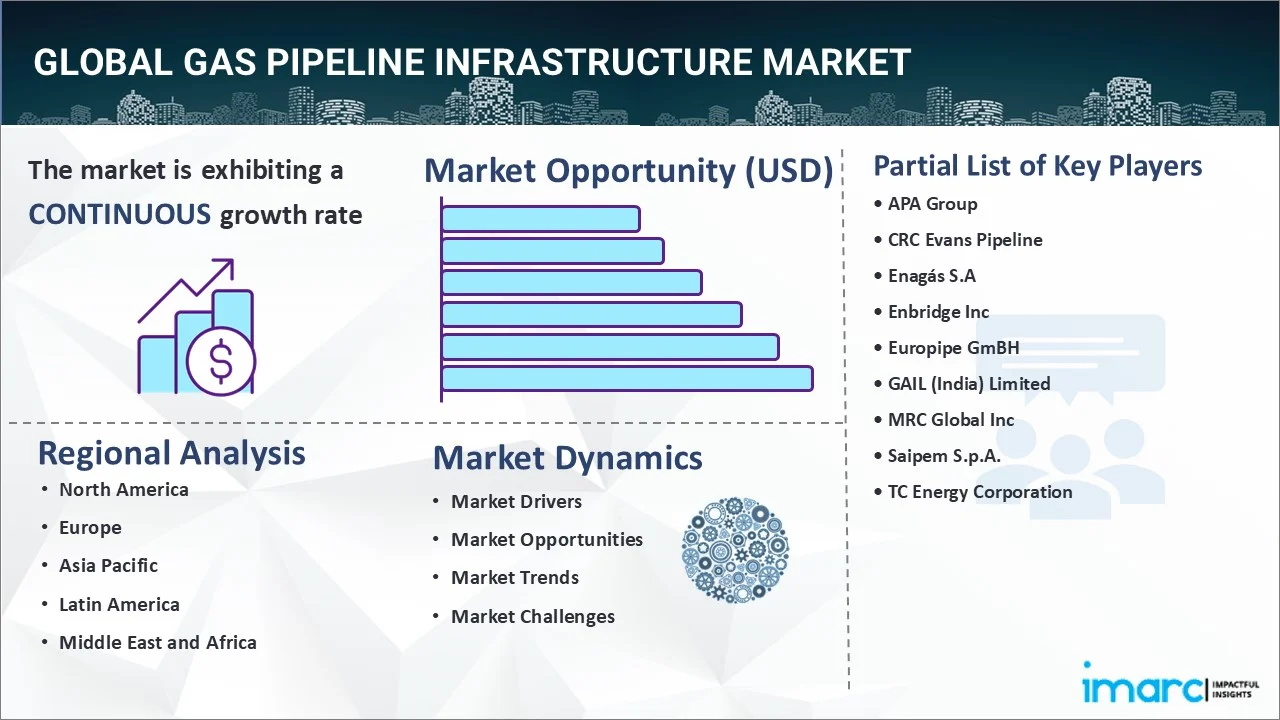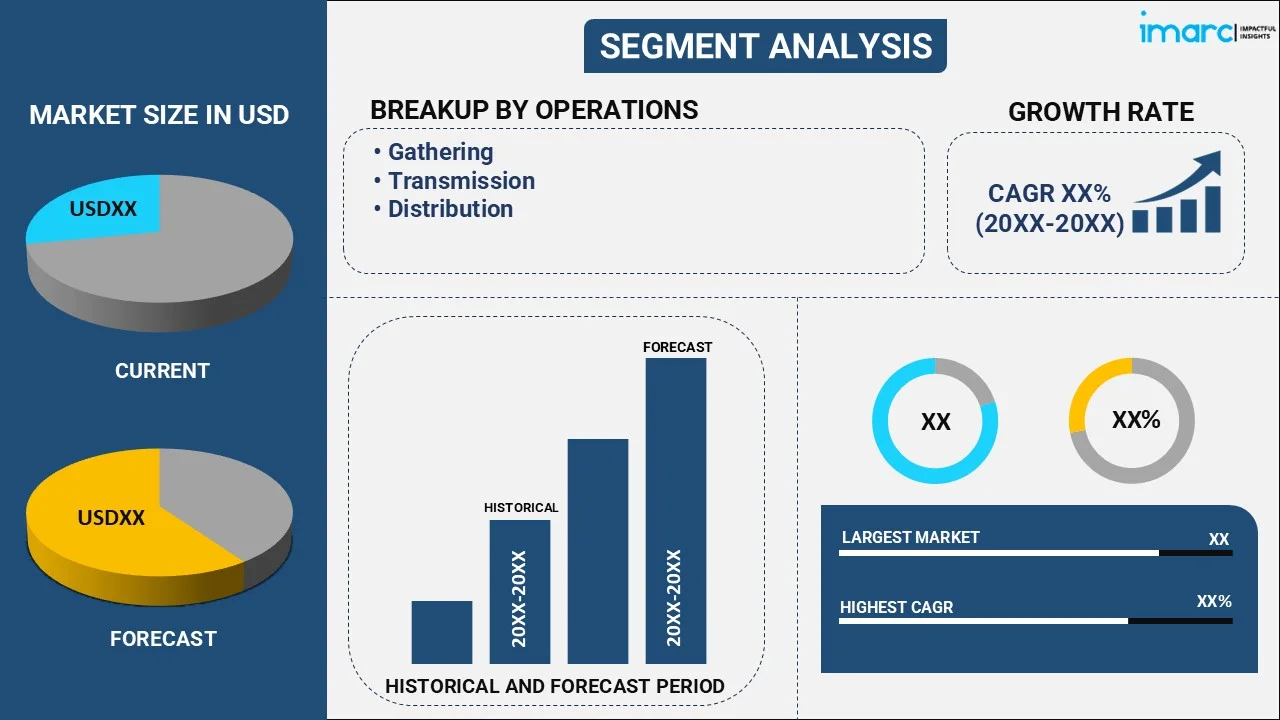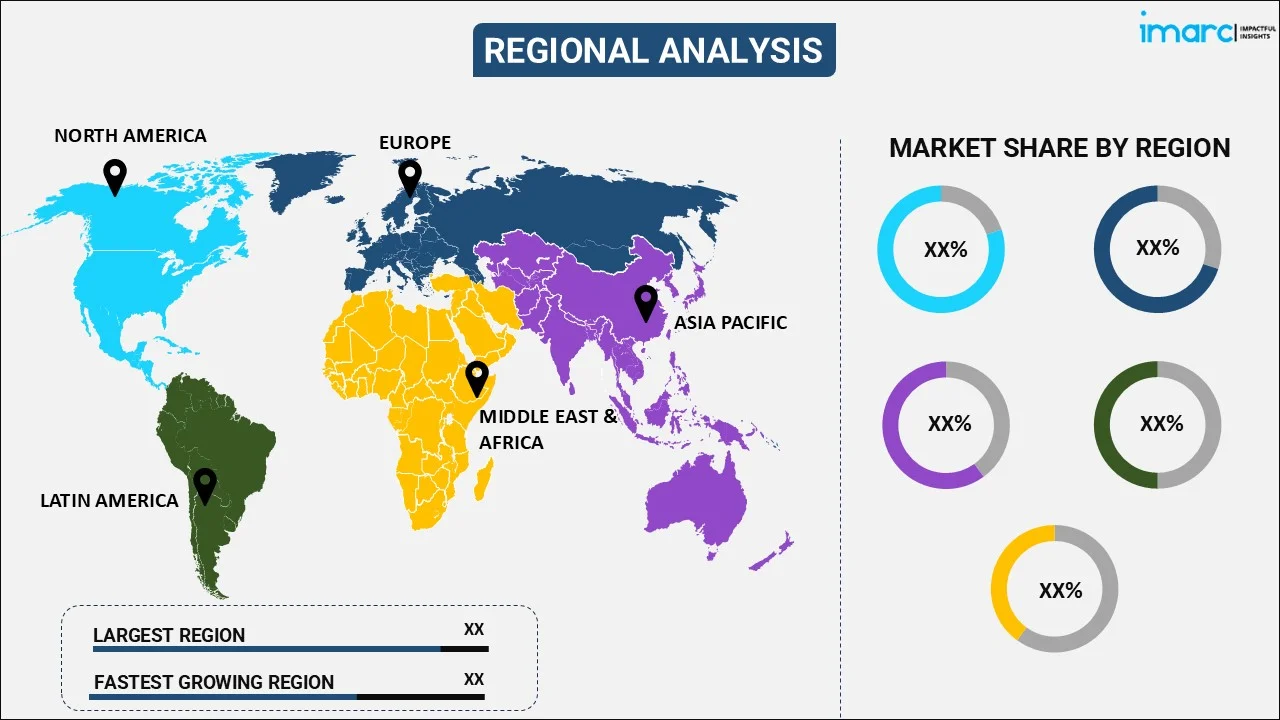
Gas Pipeline Infrastructure Market Report by Operation (Gathering, Transmission, Distribution), Equipment (Pipeline, Valves, Compressor Station, Metering Skids), Application (Onshore, Offshore), and Region 2025-2033
Market Overview:
The global gas pipeline infrastructure market size reached USD 2.8 Billion in 2024. Looking forward, IMARC Group expects the market to reach USD 3.9 Billion by 2033, exhibiting a growth rate (CAGR) of 3.51% during 2025-2033. The increasing demand for natural gas in numerous end-use applications, continual technological advancements in the methods of pipeline construction and inspection, and the reduction in the production costs of raw materials and numerous product innovations represent some of the key factors driving the market.
|
Report Attribute
|
Key Statistics
|
|---|---|
|
Base Year
|
2024
|
|
Forecast Years
|
2025-2033
|
|
Historical Years
|
2019-2024
|
|
Market Size in 2024
|
USD 2.8 Billion |
|
Market Forecast in 2033
|
USD 3.9 Billion |
| Market Growth Rate 2025-2033 | 3.51% |
The gas pipeline infrastructure is comprised of a network of pipelines that carry natural gas from the point of production to points of distribution, such as homes, businesses, and power plants. In times of peak demand, natural gas pipelines can be used as storage facilities for natural gas. The infrastructure consists of both transmission pipelines and distribution pipelines that transport gas over long distances. It consists of a large-scale network of pipelines that stretches over thousands of miles, between transmission pipelines that carry gas over long distances and distribution pipelines that deliver gas to users. In comparison to other modes of gas transportation, such as trucking or shipping, pipelines can transport a variety of gases, including natural gas, hydrogen, and other gases, with minimal losses and uninterrupted service.

Gas Pipeline Infrastructure Market Trends:
The global market is primarily driven by the increasing demand for natural gas in numerous end-use applications, including residential, commercial and industrial purposes. This can be attributed to the rising usage of natural gas as compared to traditional fossil fuels, such as coal and oil, which, in turn, is driving the need for pipeline infrastructure to transport the gas. In line with this, continual technological advancements in the methods of pipeline construction and inspection resulting in the construction and maintenance of pipelines over long distances, remote and difficult-to-access locations and challenging terrains are providing an impetus to the market. Also, the reduction in the production costs of raw materials and numerous product innovations are leading to the rapid expansion of pipeline infrastructure across a wider geographical extent, especially in emerging economies is bolstering the growth of the market. The implementation of favorable government policies, initiatives as well as incentives for the construction of gas pipeline infrastructure by government of several countries, is also fueling the market. In addition to this, the considerable growth in international gas trade leading to an increased construction of cross-border gas pipelines on a global level is creating a positive market outlook. Furthermore, the considerable growth in construction and infrastructure development projects across the globe is impacting the market favorably. Some of the other factors contributing to the market growth include rapid urbanization and industrialization, the advent of smart cities, shifting consumer preference toward renewable energy resources, and extensive research and development (R&D) activities.
Key Market Segmentation:
IMARC Group provides an analysis of the key trends in each segment of the global gas pipeline infrastructure market, along with forecasts at the global, regional, and country levels from 2025-2033. Our report has categorized the market based on operation, equipment and application.
Operation Insights:

- Gathering
- Transmission
- Distribution
The report has provided a detailed breakup and analysis of the gas pipeline infrastructure market based on the operation. This includes gathering, transmission and distribution. According to the report, distribution represented the largest segment.
Equipment Insights:
- Pipeline
- Valves
- Ball Valve
- Gate Valve
- Plug Valve
- Compressor Station
- Turbine
- Motors
- Metering Skids
The report has provided a detailed breakup and analysis of the gas pipeline infrastructure market based on the equipment. This includes pipeline, valves (ball valve, gate valve, and plug valve), compressor station (turbine and motors), and metering skids. According to the report, pipeline represented the largest segment.
Application Insights:
- Onshore
- Offshore
A detailed breakup and analysis of the gas pipeline infrastructure market based on the application has also been provided in the report. This onshore and offshore. According to the report, onshore accounted for the largest market share.
Regional Insights:

- North America
- United States
- Canada
- Europe
- Germany
- France
- United Kingdom
- Italy
- Spain
- Others
- Asia Pacific
- China
- Japan
- India
- South Korea
- Australia
- Indonesia
- Others
- Latin America
- Brazil
- Mexico
- Others
- Middle East and Africa
The report has also provided a comprehensive analysis of all the major regional markets, which include North America (the United States and Canada); Europe (Germany, France, the United Kingdom, Italy, Spain, and others); Asia Pacific (China, Japan, India, South Korea, Australia, Indonesia, and others); Latin America (Brazil, Mexico, and others); and the Middle East and Africa. According to the report, North America was the largest market for gas pipeline infrastructure. Some of the factors driving the North America gas pipeline infrastructure market included numerous technological advancements, rising demand for natural gas, presence of several key players, inflating disposable income levels, etc.
Competitive Landscape:
The report has also provided a comprehensive analysis of the competitive landscape in the global gas pipeline infrastructure market. Competitive analysis such as market structure, market share by key players, player positioning, top winning strategies, competitive dashboard, and company evaluation quadrant has been covered in the report. Also, detailed profiles of all major companies have been provided. Some of the companies covered include APA Group, CRC Evans Pipeline, Enagás S.A, Enbridge Inc, Europipe GmBH, GAIL (India) Limited, MRC Global Inc, Saipem S.p.A., TC Energy Corporation, etc. Kindly note that this only represents a partial list of companies, and the complete list has been provided in the report.
Report Coverage:
| Report Features | Details |
|---|---|
| Base Year of the Analysis | 2024 |
| Historical Period | 2019-2024 |
| Forecast Period | 2025-2033 |
| Units | Billion USD |
| Operations Covered | Gathering, Transmission, Distribution |
| Equipments Covered |
|
| Applications Covered | Onshore, Offshore |
| Regions Covered | Asia Pacific, Europe, North America, Latin America, Middle East and Africa |
| Countries Covered | United States, Canada, Germany, France, United Kingdom, Italy, Spain, China, Japan, India, South Korea, Australia, Indonesia, Brazil, Mexico |
| Companies Covered | APA Group, CRC Evans Pipeline, Enagás S.A, Enbridge Inc, Europipe GmBH, GAIL (India) Limited, MRC Global Inc, Saipem S.p.A., TC Energy Corporation, etc. |
| Customization Scope | 10% Free Customization |
| Post-Sale Analyst Support | 10-12 Weeks |
| Delivery Format | PDF and Excel through Email (We can also provide the editable version of the report in PPT/Word format on special request) |
Key Questions Answered in This Report:
- How has the global gas pipeline infrastructure market performed so far, and how will it perform in the coming years?
- What are the drivers, restraints, and opportunities in the global gas pipeline infrastructure market?
- What is the impact of each driver, restraint, and opportunity on the global gas pipeline infrastructure market?
- What are the key regional markets?
- Which countries represent the most attractive gas pipeline infrastructure market?
- What is the breakup of the market based on the operation?
- Which is the most attractive operation in the gas pipeline infrastructure market?
- What is the breakup of the market based on the equipment?
- Which is the most attractive equipment in the gas pipeline infrastructure market?
- What is the breakup of the market based on application?
- Which is the most attractive application in the gas pipeline infrastructure market?
- What is the competitive structure of the global gas pipeline infrastructure market?
- Who are the key players/companies in the global gas pipeline infrastructure market?
Key Benefits for Stakeholders:
- IMARC’s report offers a comprehensive quantitative analysis of various market segments, historical and current market trends, market forecasts, and dynamics of the gas pipeline infrastructure market from 2019-2033.
- The research study provides the latest information on the market drivers, challenges, and opportunities in the global gas pipeline infrastructure market.
- The study maps the leading, as well as the fastest-growing, regional markets. It further enables stakeholders to identify the key country-level markets within each region.
- Porter's five forces analysis assist stakeholders in assessing the impact of new entrants, competitive rivalry, supplier power, buyer power, and the threat of substitution. It helps stakeholders to analyze the level of competition within the gas pipeline infrastructure industry and its attractiveness.
- Competitive landscape allows stakeholders to understand their competitive environment and provides an insight into the current positions of key players in the market.
Need more help?
- Speak to our experienced analysts for insights on the current market scenarios.
- Include additional segments and countries to customize the report as per your requirement.
- Gain an unparalleled competitive advantage in your domain by understanding how to utilize the report and positively impacting your operations and revenue.
- For further assistance, please connect with our analysts.
 Inquire Before Buying
Inquire Before Buying
 Speak to an Analyst
Speak to an Analyst
 Request Brochure
Request Brochure
 Request Customization
Request Customization




.webp)




.webp)












